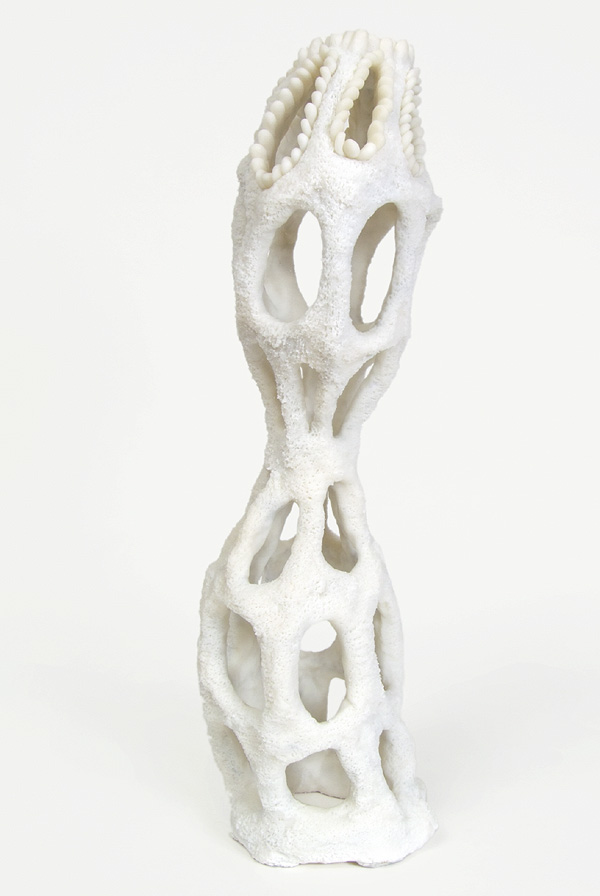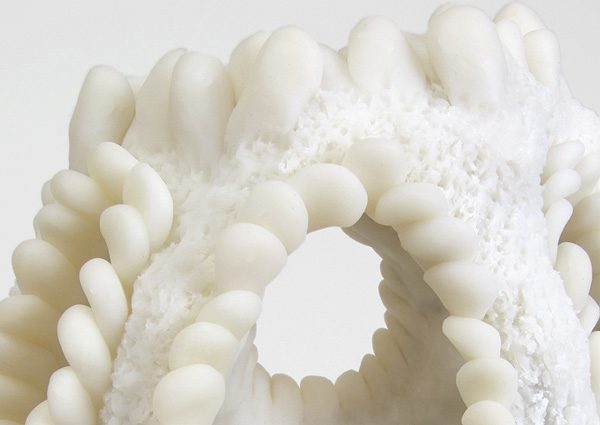aufrührerische sabinerin
rebellious sabiner


das wesen ist mit sehr beweglichen drüsen besetzt. ein primitives gewebe umgibt den beispielorganismus. das schützt ihn vor der eigenen magenflüssigkeit, die casperia seditiosa regelmässig über sich auspresst. bei der kopulation drängen die partner die gestreckten, rippenartig verstrebten körper an- und die lippenartigen ausstülpungen ineinander. dabei überträgt das männchen spermazellen direkt in die geschlechtshöhlen des weibchens. das weibchen rollt sich später an einen schattigen, feuchten platz, um mehrere hundert eier in vielen schnüren abzulegen, zu bebrüten und zu bewachen. die knospenartigen wülste von casperia seditiosa arbeiten wie eine lichtleitfaser. über diese lichtleitungen wird eintretendes licht an der grenzfläche zwischen kern und mantel totalreflektiert und im lichtwellenleiter weitergeführt. einzelne lichtwellenleiter aus säulenartig übereinanderliegenden zellverbänden übertragen lichtwellen bis in das innerste des körpers, wo sie in speicherbare energie transformiert werden.
the creature is covered with very mobile glands. a primitive tissue surrounds the exemplary organism. it protects it from its own gastric juice, which casperia seditiosa regularly squeezes out above itself. during copulation, the partners press their stretched, cylindric bodies against each other and interlock their lip-like protuberances. in the process, the male directly transmits its sperm into the genital cavity of the female. the female then rolls to a wet and shady place, in order to lay several hundred eggs on strings and then breed and protect them. the bud-like bulges of casperia seditiosa work like a light-conducting fiber. light which enters through these conductors is totally reflected on the bordering surface of the core and the mantle and transmitted through the light-wave conductor. single light-wave conductors transmit light into the inner body in cell-layers which are aligned in a pillar-shape.

